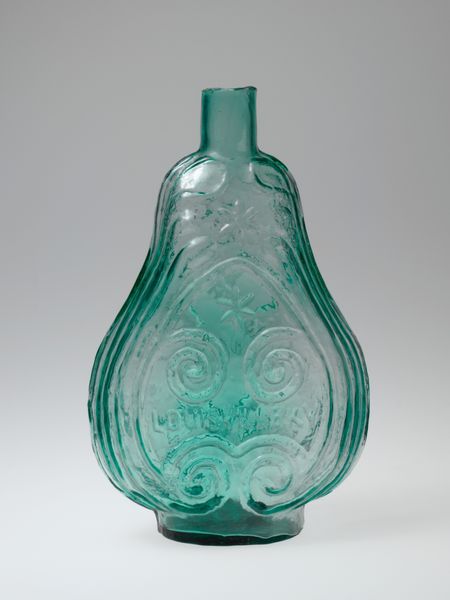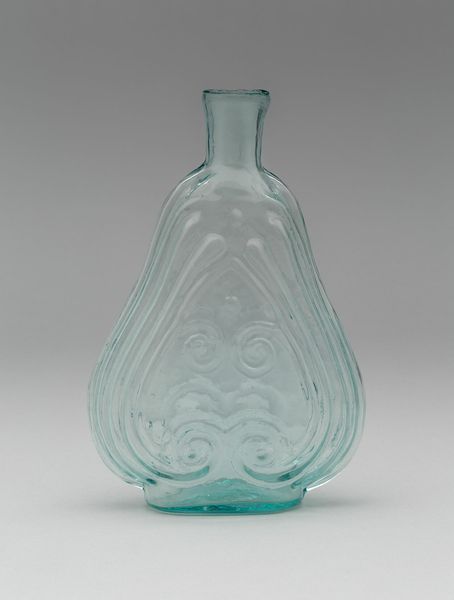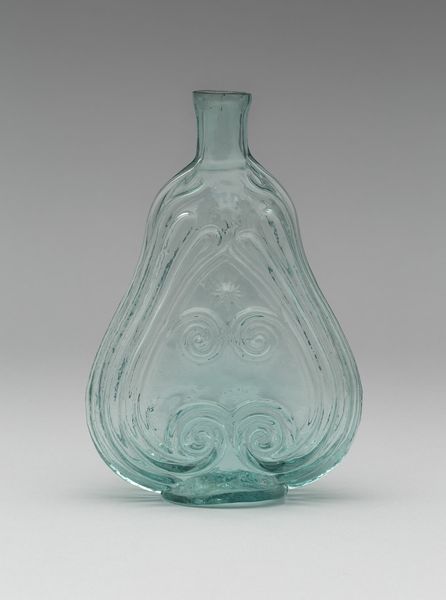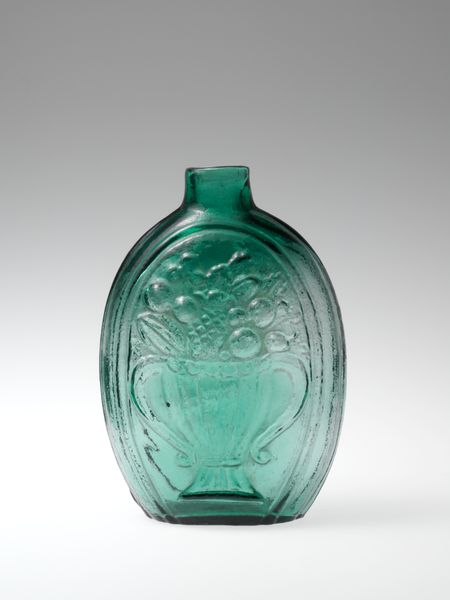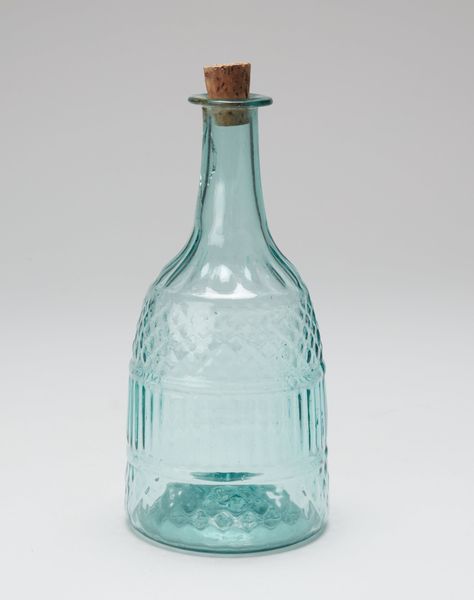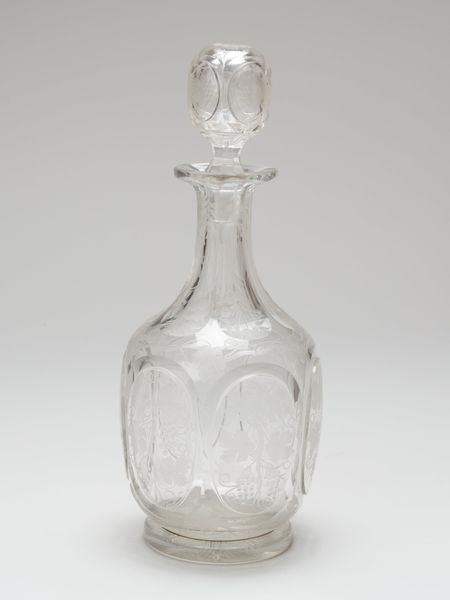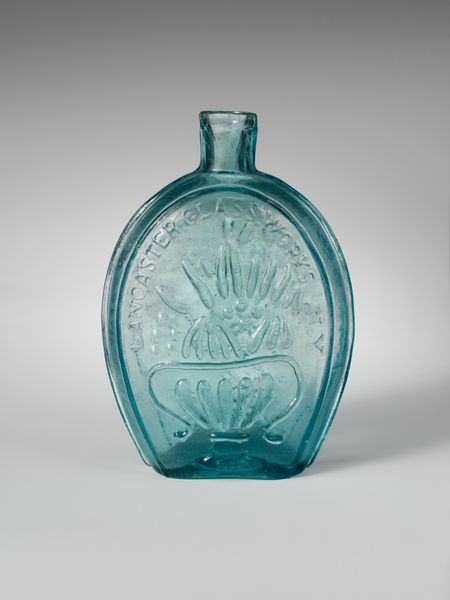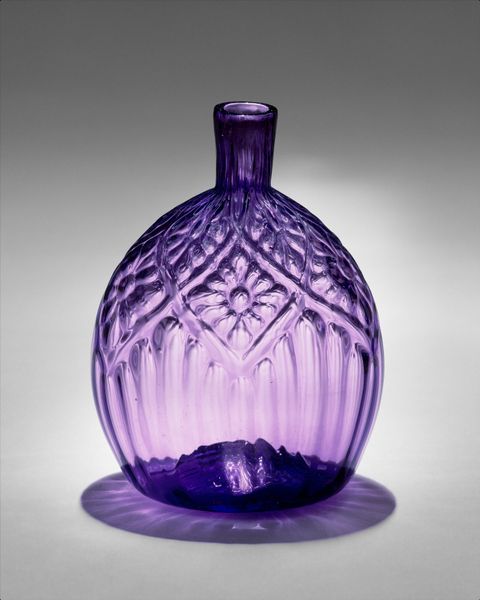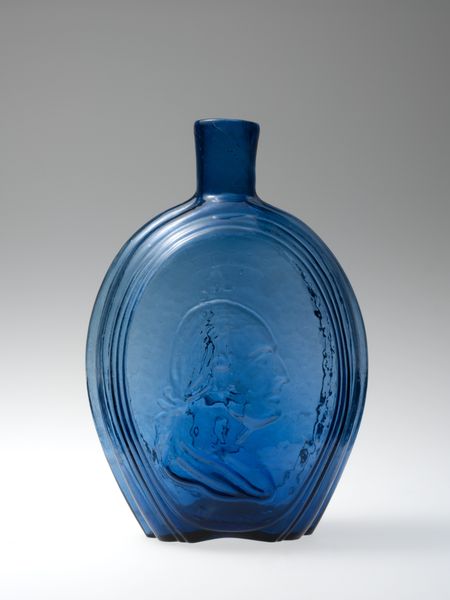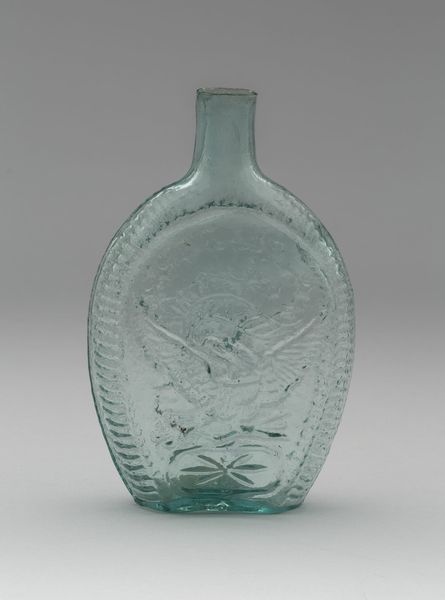
glass, sculpture
#
glass
#
sculpture
#
decorative-art
Dimensions: H. 5 7/8 in. (14.9 cm)
Copyright: Public Domain
This light blue flask was made by Bakewell, Page & Bakewell, sometime after 1827. It’s made of molded glass, a material that seems simple, yet involves complex chemistry. The addition of various minerals to molten silica produces glass of different colors, and it’s the manipulation of heat that allows it to be shaped. The visual effect of this flask relies on the mold that the molten glass was pressed into. Mass production was still relatively new at this time. But the industrial revolution and access to coal fields meant that the production of glass was no longer limited to the wealthy. Flasks like these were now available to a wider market, and this one even has the maker's mark stamped right in the middle. The production of objects like these also meant the creation of a different kind of labor, requiring careful design of the molds, and long hours of repetitive movement for those operating the machinery. When we consider all of these elements, we realize that this simple object has much to tell us about technology, labor and consumption in the nineteenth century.
Comments
No comments
Be the first to comment and join the conversation on the ultimate creative platform.
